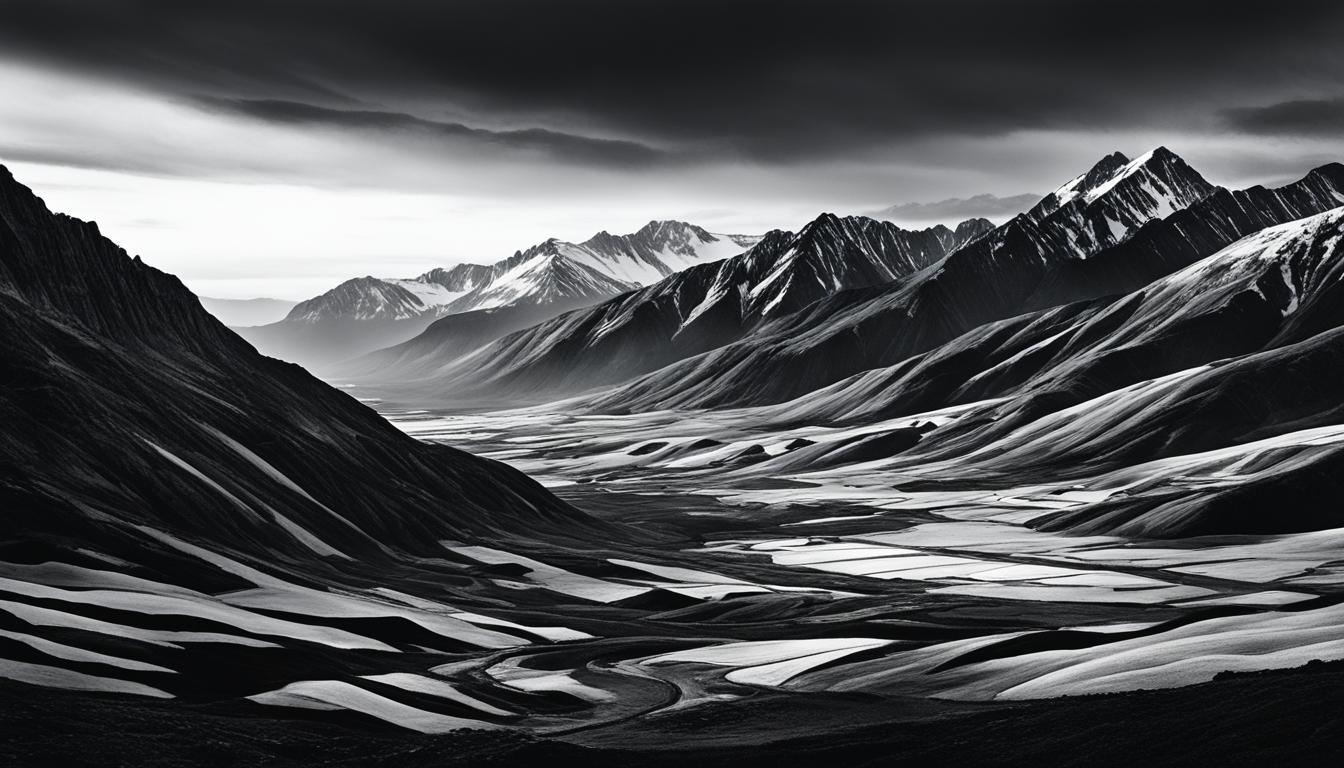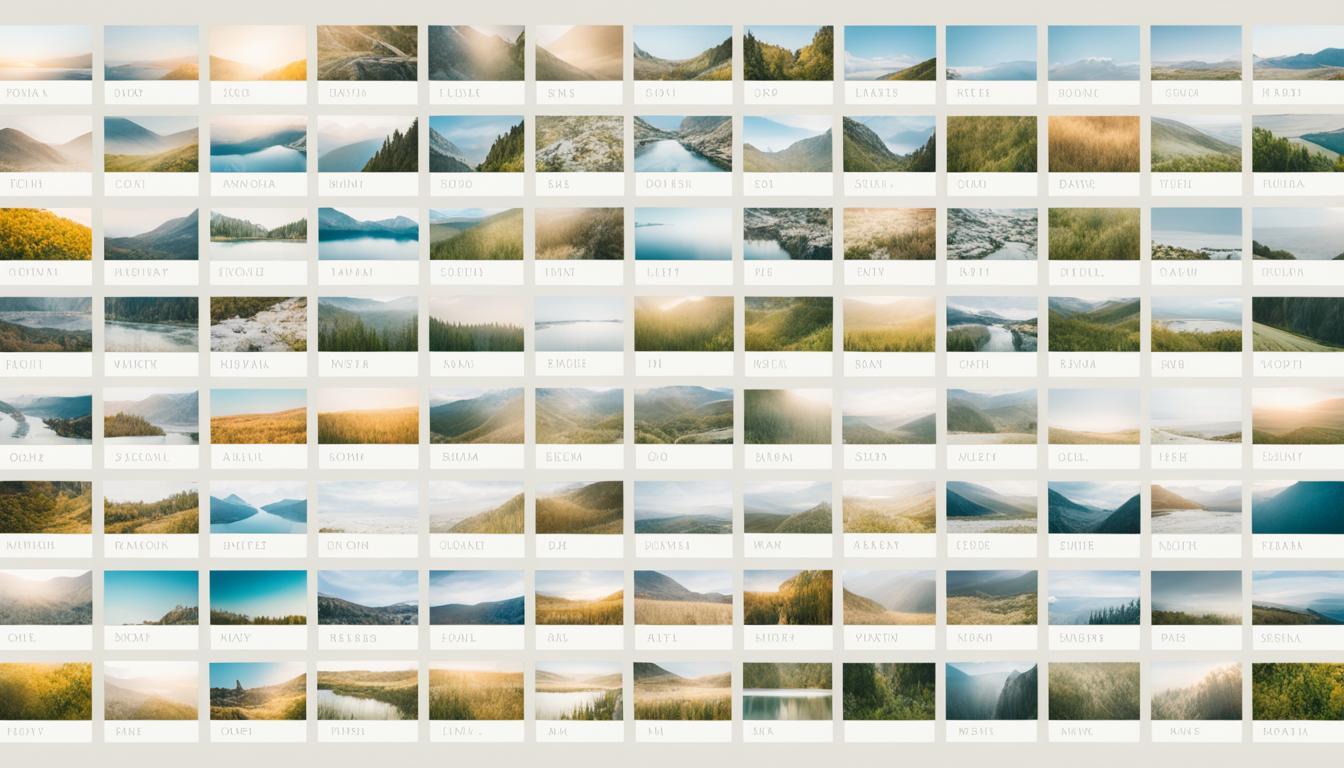Delve into the world of black and white photography and unlock the powerful techniques of converting color images into stunning monochrome masterpieces. In this informative blog post, we will explore the essential steps to mastering black and white conversion techniques, including adjusting contrast, brightness, and sharpness to create striking and impactful images. Whether you’re a beginner looking to explore the world of monochrome photography or a seasoned pro seeking to elevate your skills, this post will provide valuable insights and tips for achieving exceptional black and white conversions.
Key Takeaways:
- Utilize grayscale image editing tricks to enhance black and white pictures.
- Learn techniques for converting color photos to black and white.
- Explore black and white photo editing software and monochromatic image processing tools.
- Experiment with different methods for achieving dramatic black and white effects.
- Mastering black and white conversion techniques can elevate the impact of monochrome photography.
Understanding Tones and Contrast
Any photographer who wants to master black and white conversion techniques must first understand the importance of tones and contrast. These elements play a crucial role in creating impactful and dynamic monochrome images.
Tones refer to the different shades of grey between pure black and pure white in an image. By carefully controlling and balancing the distribution of tones in an image, photographers can create visually compelling compositions that command attention with their subtlety and depth.
Contrast, on the other hand, refers to the difference in brightness between the lightest and darkest parts of an image. Effective management of contrast allows photographers to create images with striking visual impact, where the subject stands out and commands attention.
To achieve the desired tones and contrast in black and white photography, there are several techniques and considerations to keep in mind:
- Manipulating Tones: Adjust the brightness and contrast of different tones in an image to enhance the overall composition and create a desired mood.
- Achieving Contrast: Emphasize the differences between dark and light areas in an image to create visual interest and a sense of depth.
- Balancing Distribution of Tones: Ensure that the distribution of tones is well-balanced throughout the image to avoid an overly flat or harsh appearance.
By mastering the understanding of tones and contrast, photographers can elevate their black and white images, creating visually captivating monochrome photographs.
Quote:
“Understanding tones and contrast is the key to creating powerful and impactful black and white images. By carefully manipulating the distribution of tones and achieving the right balance of contrast, photographers can bring their monochrome compositions to life.” – Renowned black and white photographer, Emma Johnson.
Conversion Techniques
Some photographers have a preference for capturing images directly in black and white, while others prefer to convert their color photographs into striking monochrome masterpieces during the post-processing stage. Regardless of your approach, mastering the art of black and white conversion techniques is essential for creating powerful and impactful monochrome images that truly captivate the viewer. In this section, we will explore various methods and tools that can help you achieve exceptional results in black and white conversions.
Channel Mixing
One popular technique for converting color images to black and white is channel mixing. By manipulating the red, green, and blue channels of an image, photographers can achieve different tonal effects and enhance the overall contrast and visual appeal. This technique allows for precise control over the distribution of tones and can be a great starting point for creating stunning monochrome compositions.
Gradient Maps
Another powerful tool in black and white conversion is the use of gradient maps. By mapping tonal values to specific colors, photographers can effectively control the contrast and mood of their monochrome images. Gradient maps offer a wide range of creative possibilities and can be utilized to add depth and richness to black and white photographs.
Adjustment Layers in Photoshop
Adobe Photoshop provides a wealth of advanced features for black and white conversions. One such feature is the use of adjustment layers, which allow photographers to make targeted edits without permanently altering the original image. This non-destructive approach enables greater flexibility and experimentation, resulting in more refined and professional-looking black and white conversions.
Advanced Black and White Tools in Lightroom
For photographers who prefer using Adobe Lightroom, the software offers a range of advanced tools specifically designed for black and white conversions. Lightroom’s dedicated black and white panel allows for precise adjustments in tonal values, contrast, and grain, enabling photographers to create exceptional monochrome images with ease and efficiency.
Using Plugins for Black and White Conversions
In addition to the built-in tools and features of Photoshop and Lightroom, photographers can also explore the use of plugins to further enhance their black and white conversions. Plugins such as Silver Efex Pro offer specialized tools and filters that can add creative effects, simulate film-like textures, and produce stunning monochrome results.
By harnessing the power of these conversion techniques and utilizing the various tools available in software like Photoshop and Lightroom, photographers can take their black and white images to new heights. Experimenting with different methods and finding a workflow that suits your style and vision will allow you to create visually captivating monochrome photographs that leave a lasting impression.
Now that we have explored the essential conversion techniques for black and white photography, let’s move on to the next section and uncover the creative considerations that can elevate your monochrome images to true works of art.
Creative Considerations
Now that we have mastered the technical aspects of black and white conversion, it’s time to dive into the creative considerations that can truly elevate your monochrome images. Understanding the interpretation and mood in monochrome photography is key to creating impactful and expressive compositions. By harnessing the power of black and white, you can evoke emotions, tell stories, and capture unique moments in a way that color photography simply cannot.
The Art of Dodging and Burning
One of the artistic aspects of black and white photography is the technique known as dodging and burning. This technique allows you to selectively lighten or darken specific areas of your image, enhancing the overall tonal range and adding depth and dimension. By carefully controlling the exposure in different parts of your photograph, you can guide the viewer’s eye and create a more dynamic visual narrative. Dodging and burning is a powerful tool that lets you emphasize certain elements, highlight details, and create a sense of drama or mystery.
“The skillful use of light and shadow can transform a simple black and white composition into a captivating work of art.” – Ansel Adams
Take a look at the image below. Notice how the careful application of dodging and burning has enhanced the contrast and created a more compelling visual experience:
 |
Interpretation and Mood in Monochrome
Black and white photography offers a unique opportunity to convey and manipulate mood through the absence of color. By focusing on tones, textures, and contrast, you can imbue your images with a specific atmosphere or feeling. The absence of color allows the viewer to interpret the scene in their own way, encouraging a deeper level of engagement and emotional connection. Experiment with different lighting conditions, compositions, and subject matters to evoke various moods, from nostalgia and serenity to grittiness and surrealism.
As legendary photographer Elliott Erwitt once said, “Color is descriptive. Black and white is interpretive.” Embrace the interpretive nature of monochrome photography and explore the possibilities of conveying your artistic vision through shades of gray.
Post-Processing and Finishing Touches
Once you have adjusted the tones and contrasts to create a stunning black and white image, it’s time to focus on the post-processing and finishing touches that will elevate your final result.
One way to enhance the authenticity and visual appeal of your black and white photos is by adding grain and texture. This can be easily achieved through various post-processing techniques, giving your images a timeless and vintage feel.
Sharpening and noise reduction strategies are also essential in black and white photography. By carefully sharpening the details and reducing unwanted noise, you can ensure that your images are crisp, clear, and high in quality. It’s important to strike the right balance to preserve the fine details while minimizing any distractions.
Another key aspect of post-processing is balancing the adjustments you make to your black and white images. This involves carefully fine-tuning the brightness, contrast, and other settings to achieve a clean and professional finish. By finding the right balance, you can ensure that your images have the desired impact without appearing over-edited or unnatural.
To summarize, post-processing and finishing touches are crucial steps in the black and white conversion process. Adding grain and texture enhances the authenticity, while sharpening and noise reduction strategies improve the overall quality of the image. Balancing the post-processing adjustments ensures a clean and professional finish, resulting in impactful and visually stunning black and white photographs.
Examples of Post-Processing and Finishing Touches
Here are a few examples of the post-processing techniques and finishing touches you can apply to your black and white photos:
- Experiment with different grain effects to add a vintage or film-like look to your images.
- Apply subtle texture overlays to give your black and white photos a tactile feel.
- Use selective sharpening techniques to enhance the details and bring out the subjects of your images.
- Apply noise reduction to smooth out any unwanted noise and create a cleaner appearance.
- Adjust the overall brightness and contrast to ensure a well-balanced and visually appealing image.
- Consider using vignettes or dodging and burning techniques to draw the viewer’s attention to specific areas of the photo.
By experimenting with these post-processing techniques and finetuning the finishing touches, you can take your black and white photos to the next level, creating stunning and impactful monochrome images.
The Zone System in Black and White Photography
The zone system, originally developed by Ansel Adams, is a powerful method for achieving precise control over exposure and processing techniques in black and white photography. By understanding this system, photographers can effectively manipulate various aspects of their images to create stunning monochrome compositions.
At its core, the zone system divides the tonal range of an image into eleven distinct zones, ranging from pure black (zone 0) to pure white (zone X). Each zone represents a specific level of brightness and can be manipulated individually to achieve the desired level of contrast and detail in the final image.
One of the key benefits of using the zone system is the ability to set mid tones, or zones IV to VI, which significantly influence the visual impact of the photograph. By carefully adjusting the exposure and processing techniques for these mid-tones, photographers can create images that convey their artistic vision and evoke specific emotions.
Adjusting the black and white points of an image is another crucial aspect of the zone system. By modifying the exposure and processing settings for zones II and IX, photographers can control the depth and richness of shadows and highlights, respectively.
Manipulating shadows and highlights is yet another technique made possible by the zone system. By selectively adjusting the exposure and processing techniques for zones I and X, photographers can enhance or subdue specific areas of their images, further adding to the overall visual impact and storytelling.
To better understand the application of the zone system in black and white photography, consider the table below, which provides a breakdown of the different zones and their corresponding tonal values:
| Zone | Tonal Value |
|---|---|
| 0 | Pure Black |
| I | Near Black |
| II | Shadow Detail |
| III | Dark Tones |
| IV | Mid Tones |
| V | Mid Tones |
| VI | Mid Tones |
| VII | Light Tones |
| VIII | Highlights |
| IX | Highlight Detail |
| X | Pure White |
By utilizing the zone system, photographers can achieve precise control over the tonal values in their black and white images, leading to impactful compositions that effectively convey their artistic vision. Through careful manipulation of mid tones, black and white points, and shadows and highlights, photographers can create monochrome masterpieces that captivate viewers and leave a lasting impression.

Conclusion
Mastering black and white photography is a journey that combines technical knowledge and artistic expression. In this article, we have explored the essential steps and techniques for achieving impactful monochrome images. By adjusting tones and contrast, mastering conversion techniques, and embracing creative considerations, photographers can take their black and white images to the next level.
Remember, the key to mastering black and white photography lies in experimentation and creativity. Don’t be afraid to explore different conversion methods and post-processing techniques to achieve the desired effect. Each photographer has their own unique style and vision, so embrace your creativity to create exceptional black and white conversions.
So, whether you’re a beginner looking to dive into the world of black and white photography or a seasoned pro seeking to enhance your skills, take these tips and techniques and go forth to capture stunning monochrome photographs. With practice and perseverance, you’ll be able to create impactful black and white images that showcase your artistic vision and mastery of this timeless genre.
FAQ
What are some important factors to consider when mastering black and white conversion techniques?
When working on black and white conversion, understanding tones and contrast is crucial. These elements play a significant role in creating impactful and dynamic monochrome images. Tones refer to the different shades of gray in an image, while contrast refers to the difference in brightness between the lightest and darkest parts of the image.
Should I shoot in black and white or convert color images to monochrome during post-processing?
It depends on personal preference and the specific requirements of the project. Some photographers prefer shooting directly in black and white, while others convert color images to monochrome during post-processing. Both approaches have their advantages, so experiment and see which one works best for you.
What techniques can I use to convert color photos to black and white?
There are several techniques you can use for black and white conversion, such as channel mixing, gradient maps, and adjustment layers in software like Photoshop. Additionally, using advanced black and white tools in Lightroom or plugins like Silver Efex Pro can provide more control and creative options for the conversion process.
How can I enhance the creative aspects of my black and white images?
To enhance the creative aspects of your black and white images, consider factors like interpretation and mood in monochrome photography. Additionally, mastering the art of dodging and burning can add depth and dimension to your photos, allowing you to create impactful and engaging compositions.
What post-processing adjustments should I make to improve my black and white photos?
Post-processing adjustments are essential to elevate the final result of your black and white images. Consider adding grain and texture to enhance authenticity, sharpening to improve overall quality, and employing noise reduction strategies for a clean finish. Balancing these adjustments will help achieve a professional look.
What is the Zone System in black and white photography?
The Zone System is a method developed by Ansel Adams for controlling exposure and processing techniques in black and white photography. It involves setting mid-tones, adjusting black and white points, and manipulating shadows and highlights to achieve the desired level of contrast and detail in the image.
How can I master black and white photography?
Mastering black and white photography requires a combination of technical knowledge and artistic expression. By understanding and applying techniques like adjusting tones and contrast, mastering conversion methods, and exploring creative considerations, photographers can elevate their black and white images to a new level of impact and artistry.
How Can Color Correction Techniques Enhance Black and White Conversion?
When it comes to black and white conversion, mastering color correction essentials guide can make a significant difference. By utilizing the right techniques, such as adjusting contrast, exposure, and tonal values, color correction can enhance the overall quality and impact of black and white images.




